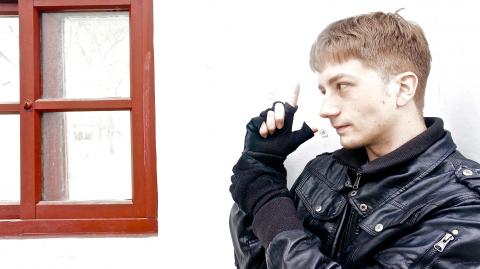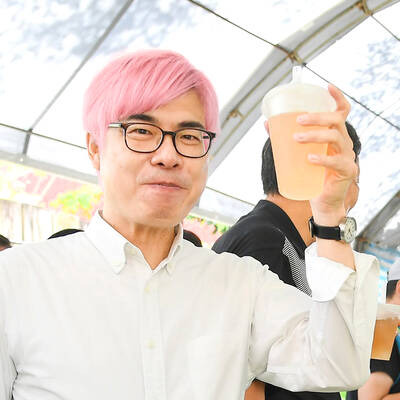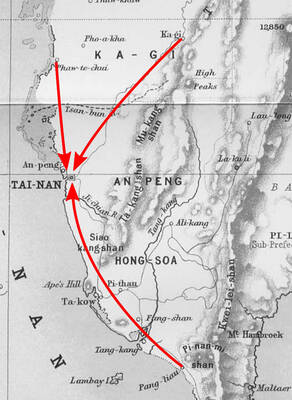Unless you are into eSports, the betting is you don’t know what a shoutcaster does and you won’t have heard of Benjamin “BreAKer” Novotny — Ben for short, aka Bin Ge (賓哥). Don’t worry about it, you’re probably old and past it.
For the uninitiated, shoutcasting is to eSports what commentating is to real sports, but much, much louder. There’s a lot of breathless building up of video game play excitement, narrating how the action plays out and giving insight on the players and their strategies. Broadcasts go out on YouTube channels to just a few viewers, or to millions all over the world on terrestrial TV and dedicated gaming platforms.
It’s not a job for noobs. You really have to know your game and be on top of the action, which means being well prepared and working with a small army of producers, directors, reporters, graphics people and statisticians. You better be good looking, have A1 networking skills and the political skills of a Machiavelli.

Photo: Jules Quartly
Shoutcasting is intensely competitive. It’s easy to become a star today and yesterday’s news tomorrow. The online community can be brutal and being trolled or dealing with the haters is just part of the job. That said, the rewards are great, the attention satisfying and you probably have groupies.
A career option that only appeared out of the Internet ether five to six years ago, it’s a job that practically anyone who has an interest in serious gaming has considered. What’s not to like? You do something you love and get paid well for it. And when it works out, Novotny says, “It’s the best feeling in the world. I love shoutcasting, more than I love gaming itself.”
Novotny’s schtick, in addition to being a master game player of CS: GO, League of Legends, Hearthstone: Heroes of Warcraft and StarCraft II, is being fluent in Chinese, which he studied at National Taiwan University. This qualifies him to shoutcast at events here and in China, simultaneously pleasing both the home crowd and international audiences.
Originally from Oklahoma, like Betsy Bobbin he’s made it to the Land of Oz, and has been working for a number of eSport-related companies in Taiwan, including Tt eSports, which makes computer accessories with a focus on gaming.
His career highlight, so far, was MCing the 2014 Taiwan eSports Open, organized by the Taiwan eSports League and held at the Expo Dome in Taipei. It was a huge live event, with some of the world’s best gamers and shoutcasters, such as Nicolas “Tasteless” Plott and Daniel “Artosis” Stemkoski.
But, Novotny says, it’s been downhill since then and he’s calling this year his make-or-break year.
“It’s my last shout for shoutcasting, or I will have to find something middle-management in the business to do,” he said.
One thing you have to realize about eSports is just how huge the market has become over the past two decades. According to Newzoo — a research company and“the experts on all things games” — eSports saw revenues of US$325 million worldwide last year. The business is experiencing year-on-year growth of 43 percent and is expected to break the US$1 billion mark in 2019.
It’s a young man’s game (though not exclusively, since 38 to 44 percent are women) and 72 percent of players are under 35. Tournament prizes have gone through the roof, and will continue to do so for the foreseeable future. The 2015 Dota 2 “International” offered US$18.4 million in prize money, while the 27 million US TV viewership for the annual League of Legends Championship dwarfs the NBA finals at 15.5 million, according to an ESPN report based on Newzoo figures.
Esport Spectacular
And while Taiwan hasn’t had much success in traditional sports (unless you count kiddie league baseball), it’s eSports status is platinum. The Taiwan eSports League (TeSL, 台灣電子競技聯盟) was established in 2008 and has five teams of full-time professionals. There are games every Saturday and Sunday night, broadcast by the country’s leading sports channel, Videoland Television Network.
Roughly one-fifth of the nation’s population watches Twitch.tv every month. For the uninformed, this Amazon-owned live streaming platform for video game content featured more than 1.5 million broadcasters and 100 million visitors per month last year. Gaming, because of its ubiquity and the fact that Taiwanese are competitive on world terms, has become a source of national pride.
Taipei Mayor Ko Wen-je (柯文哲) is a massive League of Legends fan and posts videos of his gameplay. The central government was also seeking last year to make Taiwan the sixth country in the world to recognize gaming as a competitive sport — like soccer, baseball or an Olympic discipline. This means gamers will be able to delay their military service, get government funding and have visas quickly expedited for tournaments.
Novotny is in no doubt whatsoever the government should recognize gaming as an official indoor sport.
“For sure it’s the same level as an Olympic sport, if you think in terms of the level of expertise, commitment and training. The training regimen to be a champion is parallel or greater than a traditional athlete. You have to avoid repetitive strain injuries, sit at a computer all day, with the correct posture, get your chemistry down with your teammates and go through mind-numbing analysis of other teams and tactics.”
“It’s definitely along the same lines as traditional sports, pushing the boundaries, the body taking what the mind can’t.”
He’s also keen to clear up the conception that eSports is the La-Z-Boy version of real sports: “Not really. The image is of socially inept delinquents, but it’s not really what you see, especially here, in [South] Korea and China. For the most part these are pretty well-rounded people.”
Novotny’s first love, even before he was in kindergarten, was Sonic the Hedgehog. “It got me hooked. I seldom indulged in real or traditional sports except a bit of elementary baseball. It just never really appealed, it was kinda boring.”
His first tournament was a Halo 2 competition on a military base and the young Novotny discovered that this was something he could do better than anyone else. “It was so emotional, my heart was pounding, my hands were shaking, I had to think, if I miss this grenade toss or headshot I’m going to lose.” He didn’t and he won a plaque with a picture of M249 light machine gun, which he proudly showed off to his dad.
“My dad had reservations about me joining the gaming industry. He wanted me to join the army like him. But I just wasn’t down with the ‘yessir, no sir,’ jarhead stuff.”
After falling into studying Chinese through a combination of luck and available grants, Novotny would eventually decide to combine gaming and his language skills by decamping to Taiwan.
By then he had come to the conclusion that he wouldn’t make it as a professional gamer, or didn’t want to, deciding that shoutcasting was the job for him. He’s fond of quoting the motivational speaker and former member of the Ohio House of Representatives Les Brown: “Wanting something is not enough. You must hunger for it. Your motivation must be absolutely compelling in order to overcome the obstacles that will invariably come your way.”
It’s the motto he’s living by now, as he learns how to deal with rejection and keep working on his dream to be one of the chosen few shoutcasters.
Taipei Game Show ends today at Taipei World Trade Center Hall 1

It is jarring how differently Taiwan’s politics is portrayed in the international press compared to the local Chinese-language press. Viewed from abroad, Taiwan is seen as a geopolitical hotspot, or “The Most Dangerous Place on Earth,” as the Economist once blazoned across their cover. Meanwhile, tasked with facing down those existential threats, Taiwan’s leaders are dying their hair pink. These include former president Tsai Ing-wen (蔡英文), Vice President Hsiao Bi-khim (蕭美琴) and Kaohsiung Mayor Chen Chi-mai (陳其邁), among others. They are demonstrating what big fans they are of South Korean K-pop sensations Blackpink ahead of their concerts this weekend in Kaohsiung.

Taiwan is one of the world’s greatest per-capita consumers of seafood. Whereas the average human is thought to eat around 20kg of seafood per year, each Taiwanese gets through 27kg to 35kg of ocean delicacies annually, depending on which source you find most credible. Given the ubiquity of dishes like oyster omelet (蚵仔煎) and milkfish soup (虱目魚湯), the higher estimate may well be correct. By global standards, let alone local consumption patterns, I’m not much of a seafood fan. It’s not just a matter of taste, although that’s part of it. What I’ve read about the environmental impact of the

Oct 20 to Oct 26 After a day of fighting, the Japanese Army’s Second Division was resting when a curious delegation of two Scotsmen and 19 Taiwanese approached their camp. It was Oct. 20, 1895, and the troops had reached Taiye Village (太爺庄) in today’s Hunei District (湖內), Kaohsiung, just 10km away from their final target of Tainan. Led by Presbyterian missionaries Thomas Barclay and Duncan Ferguson, the group informed the Japanese that resistance leader Liu Yung-fu (劉永福) had fled to China the previous night, leaving his Black Flag Army fighters behind and the city in chaos. On behalf of the

The Taipei Times last week reported that the rising share of seniors in the population is reshaping the nation’s housing markets. According to data from the Ministry of the Interior, about 850,000 residences were occupied by elderly people in the first quarter, including 655,000 that housed only one resident. H&B Realty chief researcher Jessica Hsu (徐佳馨), quoted in the article, said that there is rising demand for elderly-friendly housing, including units with elevators, barrier-free layouts and proximity to healthcare services. Hsu and others cited in the article highlighted the changing family residential dynamics, as children no longer live with parents,